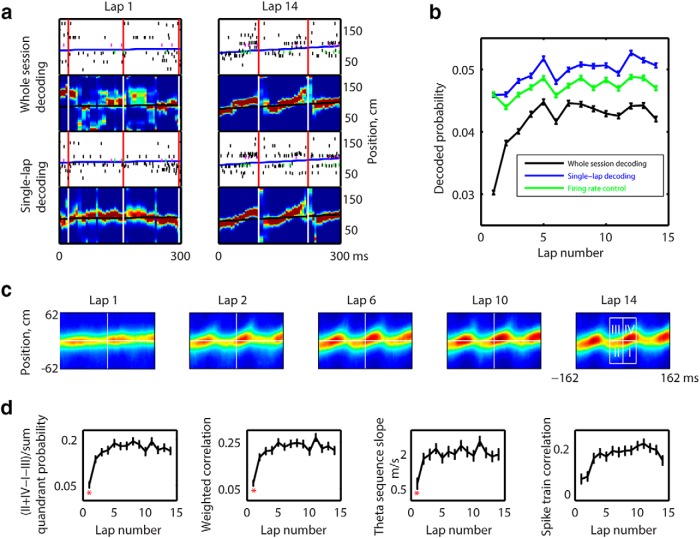Figure 3.
Single-lap decoding was more accurate than whole session decoding and preserved the rapid development of theta sequences. a, Examples of 300 ms spike train (black bars) and decoding using whole session decoding and single-lap decoding in lap 1 and lap 14. The spikes were ordered, respectively, by cells' peak firing position in whole session place field or single-lap place field. Blue line in spike train and black line in decoding indicate the animal's current running location. The beginning and end of theta sequences were indicated as white (in decoding) or red bars (in spike train). Magenta and green bars represent spikes from two cells. Color scale is the same as in Figure 1a. b, Averaged decoded probabilities (decoded window of 20 ms moving with 5 ms step) on the animal's current running locations between different laps. Black represents whole session decoding. Blue represents single-lap decoding. Green represents firing rate controlled data. c, d, Same as in Figure 2 using single-lap decoding. * and color scale as in Figure 2.

